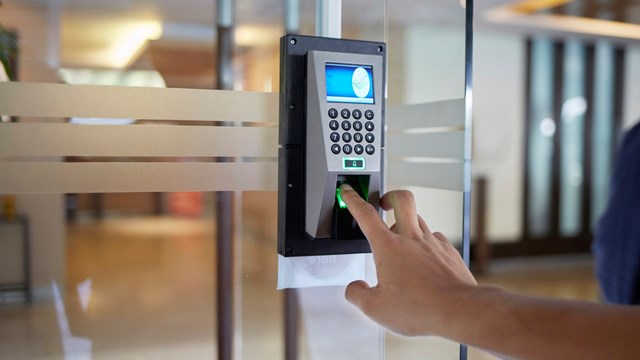As smartphones have become ubiquitous, app-based technologies have impacted nearly every corner of our lives - including how we secure and grant access to our homes. While plenty of multifamily buildings still rely primarily on buzzers and intercom systems for controlling who comes and goes, more and more are moving to include, or even transition entirely to cell phone apps for access control. Apartment dwellers today have the option of answering their door from almost anywhere. With a fully remote-enabled system, the days of coming home to a ‘Sorry we missed you’ notice from UPS on the front door may be over.
Options for improved buzzer and intercom systems still run the gamut from the more traditional audio-only box inside your front door, to video flat screens with phone app-based viewing options, to systems that support not just audio/video, but access control as well, all from a smartphone. What type of system your co-op or condo chooses may depend more on the cost of upgrading and residents’ level of tech-savviness than other factors, but the options are there. Here are a few things to consider if your building is thinking of updating its access control system:
Out With the Old?
“There is a correlation between the age of the system and how easy it is to replace,” says Tony Liebel, CEO of Buzr Labs, a tech start-up located on Roosevelt Island in New York City. “But there’s no cutoff for building age. Theoretically, any system can be replaced.” In working on an older building, Liebel says, “Existing wiring that’s the biggest obstacle to replacement. In most very old buildings, the wires run from the front door to each unit and are entrenched, so removing or changing them is very difficult.” To get around that complication, he says, “Some companies only replace what’s at the front door and go to a cell phone app-based system, so there isn’t any intercom station in the apartment.”
“If the existing buzzer or intercom system is working though,” continues Liebel, “the benefit of a retrofit is to bring that system online. For many apartment dwellers still living with old [offline] door-to-door systems, that’s the problem. When you’re not home and you have a delivery, for example, you can’t let them in. Fully 30 percent of packages are undelivered on the first attempt today. But with a cellphone-based app you can let people in without being there.”
A Cautionary Tale
Along the lines of what Liebel describes, replacement and upgrading an old entry system does have the potential for hassle. One resident of a 56-unit pre-war co-op in Washington Heights describes their experience:
“We had the original intercom system from when the building was built back in 1938,” she says. “It worked reasonably well, except when there was heavy rain, in which case the audio would be nothing but static. We have a mixed-age population, and while some residents wanted the ability to answer the door from their phones, others wanted the traditional stationary box at their front doors with video. We decided to go with a mixed system, and took bids. The vendor provided a replacement plan that didn’t require rewiring from the front door to the individual apartments - just the replacement of the front door panel and the individual monitors in the apartments - and that also included a phone app.”
Happy not to have to rewire the whole system, the building went with the plan. However, “After the installation of the new front door panel and the apartment monitors, the vendor could never get the wiring straightened out. If someone rang 5A, they might get 2G. Also, the audio and video options on the individual monitors never worked correctly or in unison. Ultimately,” says the shareholder, “we had to rewire the entire system anyway, and at a much higher cost than we originally anticipated.”
Liebel points out that this type of problem - and the full replacement of an otherwise functioning system - can often be avoided entirely. The old saying ‘if it ain’t broke don’t fix it’ applies to intercom systems too. Associations and corporations can choose to go entirely with a cellphone-based app, or they can choose a system that provides the cellphone-based app as an enhancement to the existing system. Liebel says that instead of replacing the panel at the front door of the building - which can lead to potential problems with the existing wiring, like what happened with the Washington Heights co-op, they replace the monitors in the individual apartments with new monitors that work in sync with a cellphone-based app, providing both stationary and remote response options. Video on the new individual monitors is optional.
Buzzer and intercom replacement is just one of many upgrades co-op and condo owners are considering. With the improving technologies coming on to the market virtually daily, decision makers should consider not only the cheapest alternative, but the most flexible and effective for both safety and convenience.










Leave a Comment